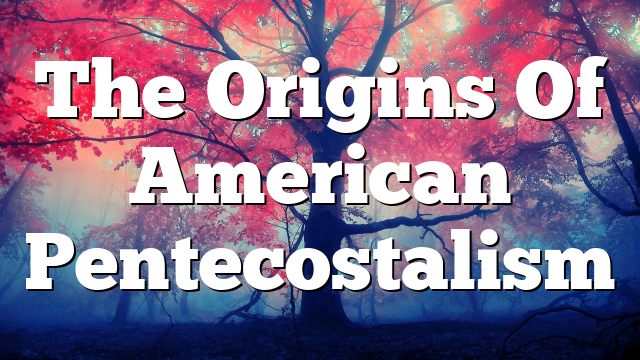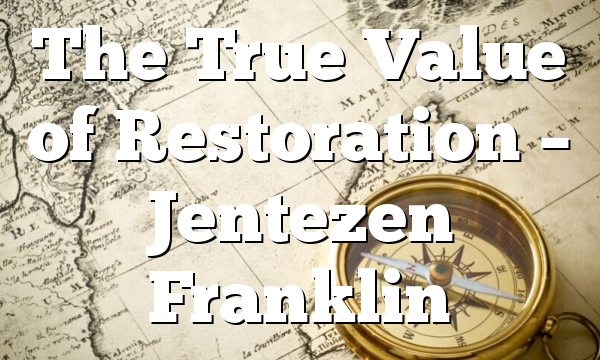Click to join the conversation with over 500,000 Pentecostal believers and scholars
| PentecostalTheology.com
77
The
Origins of American Pentecostalism Augustus Cerillo, Jr.*
A Review Essay of James R.
Goff, Jr., Fields White Unto Harvest: and the Missionary Origins of Pentecostalism of Arkansas Charles F. Parham (Fayetteville: The
University $12.00 paper.
historian Klaude Kendrick Press, 1988).
263
pp.
to the As best I can remember, I first heard about Charles F. Parham and his role in the beginnings of American Pentecostalism sometime during the school year
1959-60 when listening to a lecture on Parham given by (then Dean of Evangel College) history club at Evangel, of which I was president and
responsible for the program.
At that time I did not realize that Marie Burgess Brown, my home church pastor, whom I had listened to preach countless times, had begun her Pentecostal ministry under this same Parham; although I recalled “Sister Brown”
referring to her Wisconsin roots, Moody Bible experiences, name, nor did his name ever appear in the Institute, and
early Pentecostal ever mentioning Parham’s biographical sketches in Glad “evangelist,”
I did not remember her Tidings Tabernacle’s anniversary origins as I
though my Northwestern booklets. In one such account reference was made to an unnamed whom I later discovered was none other than Parham.
I did not think much about Parham and Pentecostal pursued my own
graduate studies in history in the early 1960s, even
University focused on the Gilded Age
and
Progressive emerged in the United States.
Only
in the very
late
Pentecostalism 1960s and Pentecostalism early 1970s, when
doctoral dissertation research Era,
the
very
time when searching for
information on the Pentecostal movement. scholarly works on Pentecostalism addition to Kendrick’s pioneering to
prepare lectures on the subject for Adult Sunday School classes and then for a college course, did I think seriously about the origins of
my
own
religious tradition and the pioneers who created I
quickly Pentecostal discovered the number of by historians was rather limited. In The Promised Fulfilled (1961), The Pentecostals which I believe initiated the modem American professional study of
history, there was John T. Nichols’
(1971, originally, Pentecostalism, 1966), William Menzies’ Anointed to Serve: The Story of the Assemblies Synan’s The
Holiness-Pentecostal of
God
(1971), and Vinson Movemerzt in the United States *Augustus Cerillo, Jr., is Professor of History at California State University, Long Beach.
1
78
(1971). Interestingly, tovarying degrees Pentecostalism.
described all were begun as doctoral dissertations, Parham’s field of Pentecostal catalyzed and
shaped, Such
developments place in the and all history of
larger group and other academicians Since the mid-1970s, as readers of Pneuma no doubt are aware, the
studies has almost become a boom industry, I
believe, by several mutually reinforcing developments.
include the sheer growth in numbers and rising social prominence of
Pentecostals; the
emergence of a much of
Universityand
Seminary-trained interested creation of the Society for Pentecostal journal, Pneuma; the
organization specializes in the publication growing historical consciousness and their establishment Pentecostal aids.
of books on Pentecostal Blumhofer, Wayne Nienkirchen, Goff have brought to the study of the Warner, publication Pentecostal scholars in
studying Pentecostalism; the
Studies and publication of its of Hendrickson Publishers, which subjects; a among Pentecostal church leaders, the
Mickey Crews, Charles Perhaps the culmination of this phase was the and
and other scholars have emerge during the first decade causes.
of Moreover, of denominational archives to preserve heritage; and the publication of numerous bibliographical Pentecostal historical scholarship, as one part
of this larger field of Pentecostal studies, has matured conceptually even as it has grown quantitatively.
Scholars such as Robert Anderson, Grant Wacker, Edith Mel
Robeck, Gary McGee, James Tinney, Leonard Lovett, and James new
questions, insights, methodologies and research of Pentecostal history, thereby enriching our
understanding innumerable events, personalities and details that comprise the internal history of Pentecostalism.
in the development of
professional Pentecostal historiography in 1988 of the indispensable Dictionary of Pentecostal Charismatic Movements, edited by Stanley M.
Burgess and
Gary
B. McGee.
In one way
or another these historians wrestled with the broader and more fundamental question of
origins: how, why and where did Pentecostalism of the twentieth century?
And on this issue they
have
given a diverse usually constructed around some combination racial and providential path(s) these historians have taken to origins, they all, either implicitly or
explicitly, have had to deal with four underlying questions. First, what
larger and
religious setting or context must be fully the
timing, early theological shape and
staying power of the Pentecostal revival?
Second, how
and discontinuities century holiness and evangelical revivals, movements and theological innovations be assessed, and inform an analysis of origins?
set of answers sociological, ideological, whatever general interpretative explain Pentecostalism’s socio-economic, political explored to understand should the continuities nineteenth and social of Pentecostalism with 2
79
Third, what is the relative significance for an understanding of Pentecostal beginnings of those elements of Pentecostal beliefs and practices that
provided a measure of unity and cohesion to Pentecostalism, and the undeniable theological, social and organizational diversity that characterized primitive Pentecostalism? In other words, should the Pentecostal movement be viewed as a whole or in terms of its parts?
Is the historian faced with a single Pentecostal movement or with Pentecostal movements, and what are the implications of these questions for a study of
origins? Fourth, what were the social sources of Pentecostalism? How does knowing something about who became Pentecostal, including leaders and followers, and
why help us understand why
Pentecostalism arose and developed as it did? What light might this
information shed on the previous three questions?
Fields White Unto Harvest: Charles F. Parham and the Missionary Origins of Pentecostalism nicely illustrates the professional coming-of-age of Pentecostal scholarship.
James Goff, a historian trained at the University of Arkansas where the book began as a doctoral dissertation, has
given us one of the few scholarly biographies of any early Pentecostal leader and the only
definitive study of Parham. It is well-written, clearly organized, and
exhaustively researched both in the primary sources and pertinent secondary literature.
Throughout the book and in the many
content notes at the end of the volume, Goff displays a sure grasp of the many interpretive issues, including what other historians have written, surrounding Parham’s role in Pentecostalism’s beginnings.
Thus this fine account of Parham’s life, thought and career is of value to scholars as well as the general reader, and, as I have found personally, is well-suited for college courses on Pentecostalism.
Golfs analysis of Parham’s place in Pentecostal history combines the contributions of traditional Pentecostal historians who give primacy to the



Anonymous
Philip Williams Jesus said that it was the scriptures, the writings of Moses, and the prophets that testified of him. He often appealed to the authority of the scriptures when teaching his disciples, answering the challenges of the scribes and Pharisees and even when battling the devil head on. Today, Christians still have the same scriptures Jesus used. In addition, we have the words and works of Jesus recorded in the Gospels. We also have the Acts and letters of the apostles. These writings make up the 27 books of the New Testament. None of the books were produced after the era of the Apostles. Church councils were a necessary part of church history clarifying what Christians believed based upon these inspired and authoritative writings of Holy Scripture. Yet traditions and creeds are not equal in authority to the words of Christ and His apostles recorded in the holy scriptures themselves.
Anonymous
Troy Day i dunno troy, do we include books that reference 1 enoch and the Assumption of moses, books? (jude and the peter books)
Anonymous
Bishop Bernie L Wade As best I can remember, I first heard about Charles F. Parham and his role in the beginnings of American Pentecostalism sometime during the school year
1959-60 when listening to a lecture on Parham given by (then Dean of Evangel College) history club at Evangel, of which I was president and
responsible for the program.
At that time I did not realize that Marie Burgess Brown, my home church pastor, whom I had listened to preach countless times, had begun her Pentecostal ministry under this same Parham; although I recalled “Sister Brown”
referring to her Wisconsin roots, Moody Bible experiences, name, nor did his name ever appear in the Institute, and
early Pentecostal ever mentioning Parham’s biographical sketches in Glad “evangelist,”
I did not remember her Tidings Tabernacle’s anniversary origins as I
though my Northwestern booklets. In one such account reference was made to an unnamed whom I later discovered was none other than Parham.
I did not think much about Parham and Pentecostal pursued my own
graduate studies in history in the early 1960s, the author wrote